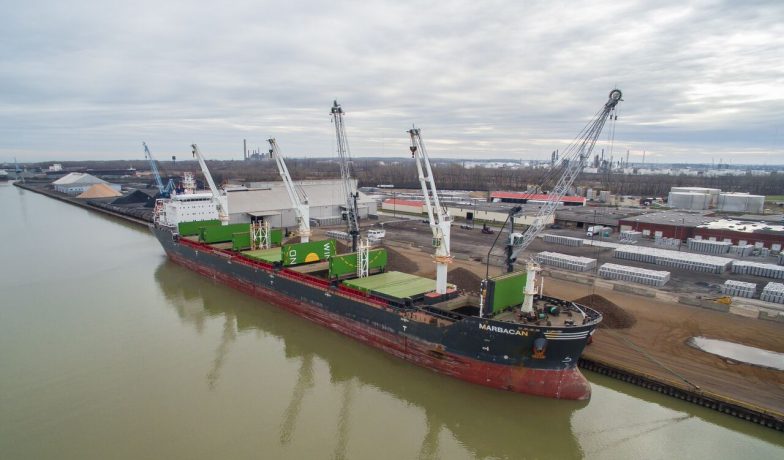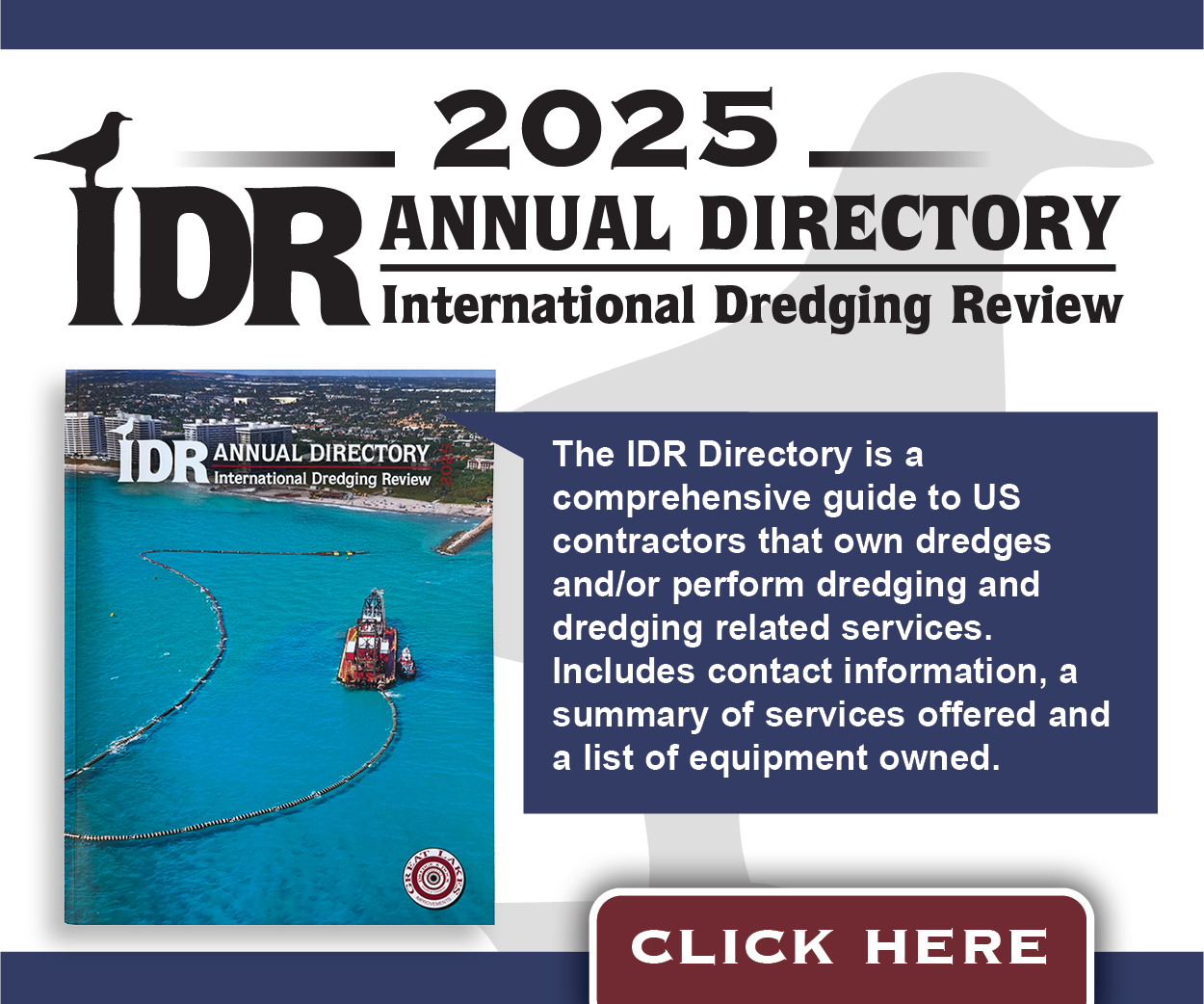Seaway Development Officials Travel to Germany for Business Networking
The first trip took place May 9-16 and included the “Transport Logistics Trade Fair” in Munich, Germany, and then travel to Dusseldorf for meetings pertaining to the “Great Lakes-Germany Maritime Trade Corridor Program” with a focus on supply chains and strategic business development networking.
The second trip is also to Germany, to the cities of Hamburg, Bremen and Brake and occurs September 6-13. This trip has two objectives: trade and tourism.
Increasing Great Lakes Awareness

These trips are getting top-level attention. For both trips, the GLS team will be led by Adam Tindall-Schlicht, administrator for the GLS. The trip in May was Tindall-Schlicht’s first such trip as administrator. He participated in the trade mission last September to Antwerp, part of a group that met to sign the Memorandum of Understanding between Great Lakes interests and counterparts in Antwerp-Bruges. On that trip Tindall-Schlicht was the director of the Port of Milwaukee. He took over as the administrator of GLS in November 2022.
Tindall-Schlicht said his perspective hasn’t changed because of his recent shift from being part of the travel team to now leading the team. “My goal is to ensure that European trading partners are fully educated and fully informed about the viability of the Great Lakes St. Lawrence Seaway system for commercial transportation,” he said.
Greater awareness, he added, requires outreach to shippers, carriers and all the participants in the logistics chain. Strategic partnerships are important.
Tindall-Schlicht said that he wants to emphasize and leverage the work being done by the Highway H2O alliance, a U.S.-Canadian membership trade group that promotes marine transportation on the Great Lakes St. Lawrence Seaway system. The Hwy H2O, formed in 2003, is sponsored by the St. Lawrence Seaway Management Corporation and the Great Lakes St. Lawrence Seaway Development Corporation. Members include Great Lakes ports as well as commercial entities such as stevedores, carriers and municipalities.
Tindall-Schlicht said recent Congressional funding for trade development means GLS can increase its commitment to Hwy H2O.
Another goal is increased Seaway and Great Lakes utilization, an effort which Tindall-Schlicht said has “both a micro and macro reference.” On a larger scale, utilization references the full range of vessels and traffic that the Great Lakes St. Lawrence Seaway can accommodate, as well as all types of cargo. At a micro level it references more granular work required in specific regions or markets.
He said the first Germany trip exemplifies the close effort necessary to expand markets and trade. This is the first GLS trip specifically focused on German markets and trade specialists. One goal was to meet with and build relationships among Germany’s freight forwarders. Again, building on and complementing Hwy H2O efforts.
Tindall-Schlicht said new work with freight forwarders will help with cargo diversification and expand opportunities among Great Lakes shippers. The Great Lakes maritime economy, he said, needs to maintain traditional markets such as European steel and breakbulk and expand into new markets and services, such as containerized shipping.
Tindall-Schlicht said foreign transport and logistics officials are eager to learn about opportunities in the Great Lakes St. Lawrence Seaway System that avoid congested coastal ports. “The proximity to the heartland of North America,” Tindall-Schlicht said, “through U.S. and Canadian Great Lakes ports is an opportunity that individuals are keen to better understand.”
He said there are follow up questions about seasonal impacts on shipping, for example, or specific questions about locks and various Great Lakes ports. “People are keen to leverage any opportunity that provides them and their customers with a safe, reliable, efficient and cost-effective solution,” he added.
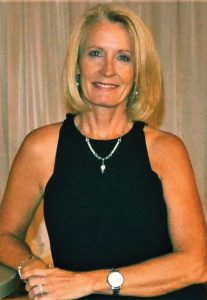
For the May trip, Rebecca S. Yackley, director of the Office of Trade and Economic Development at GLS, said individuals from the Ports of Monroe and Duluth Superior were among the participants joining the trade mission. Importantly the GLS and the GSGP have parallel schedules, but each group has developed its own agenda, although they are working together.
The GLS Office of Trade and Economic Development has identified shippers importing commodities from Germany, shippers currently using coastal ports, e.g., Norfolk, New York/New Jersey, and Baltimore, but with final product destinations farther inland. In the trade mission meetings, the GLS team planned to highlight advantages of using the Great Lakes St. Lawrence Seaway System as a direct route into North America’s heartland. GLS officials were expected to attend a series of events:
First is the Transport Logistics Fair, in Munich, which is considered the leading platform for international networking in the logistics industry. This event offers direct access to European maritime shippers who have the potential to use the Seaway system.
Second is a visit coordinated with the Port of Antwerp-Bruges to Nuremberg, a freight, transport and logistics center that interconnects road, rail and inland waterways and international markets.
Third is a set of meetings with Western German transportation and logistics providers followed by an educational seminar, in Dusseldorf, presented by the Port of Antwerp-Bruges, the Canadian St. Lawrence Seaway Management Corporation, and the Conference of Great Lakes and St. Lawrence Governors and Premiers.
Raising Awareness for Cruising
The September trade mission is to “Seatrade Europe,” a trade show that, Yackley said, “provides the GLS and stakeholders the opportunity to raise the awareness of the Great Lakes as a destination for cruise ships.” Following Seatrade, GLS will switch to a cargo focus and meet with current and potential Great Lakes St. Lawrence Seaway users, including carriers, shippers and freight forwarders. “Our goal,” she explained, “while in Hamburg, Bremen & Brake is to increase the number of cruise ships, as well as cargo tonnage throughout the Great Lakes St. Lawrence Seaway system.”
Editor’s Note: Stakeholders interested in attending the September trip to Germany can contact Rebecca S. Yackley at 202-297-9448, rebecca.yackley@dot.gov or Peter Hirthe, Great Lakes Regional Representative, 414-551-3161, peter.hirthe@dot.gov. Participants are responsible for their own airfare and additional costs.
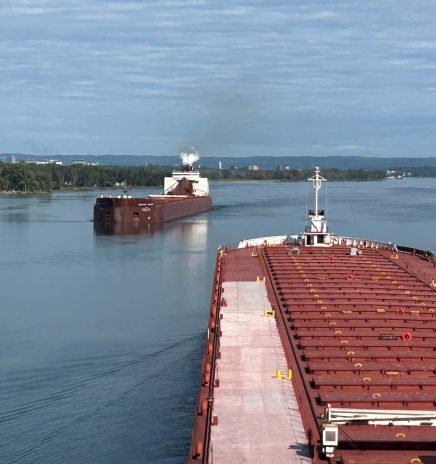
Great Lakes Iron Ore and Limestone Trade Down in October
The Lake Carriers’ Association reports shipments of iron ore on the Great Lakes totaled 4.4 million tons in October, a decrease of 1.3% compared to 2024. Shipments were 8% below... Read More
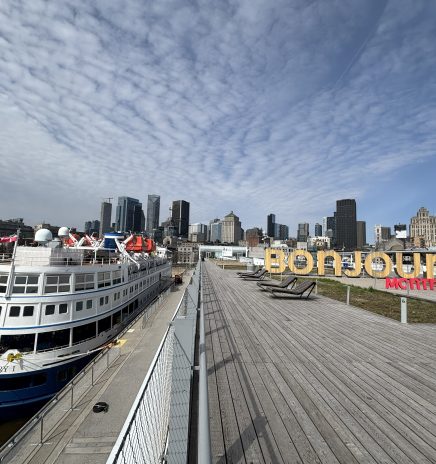
Port of Montréal Prepares for Next Cruise Season
The Montréal Port Authority (MPA) is looking ahead to the 2026 passenger cruising season, which will begin on April 24 with the arrival of the Victory I from Victory Cruise... Read More

